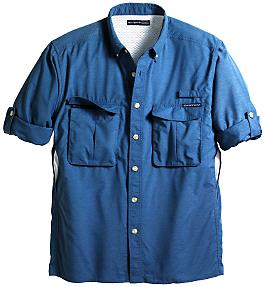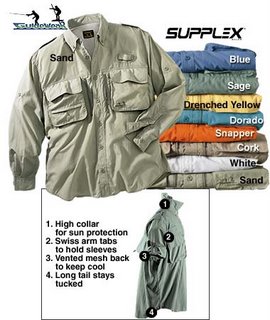 I drink about 6 cups of coffee throughout each morning, especially when I am in the endoscopy suite. Aside from that first cup I have at home, the rest is bad, generic office/hospital drip coffee. You know, the pre-ground variety that comes in 10-cup packs.
I drink about 6 cups of coffee throughout each morning, especially when I am in the endoscopy suite. Aside from that first cup I have at home, the rest is bad, generic office/hospital drip coffee. You know, the pre-ground variety that comes in 10-cup packs.Wanting to at least enjoy my home-made coffee, I recently was introduced to the press pot or French press. This is where this "adventure" of coffee discovery begins.
The Brewing Implements
First off, if you don't know what a French press is, coffeegeek has all the info for you.
There are a few brands on the market, but Bodum seems to be the most popular. Personally, I find the Bodum Chambord the most attractive, but Luisa and I ended up getting the Bistro model, which Amazon currently sells as part of a gift set that is hard to beat in value. We needed the (matching) cups anyway. I find our coffee cups too small, and frequently drink my coffee out of tacky purple Nexium mugs. The beakers are handy to hold warm milk, and to measure grounds.
A word about these presses: they come in different sizes from 3-cup to 8-cup and more. Each cup equals half a U.S. cup. For instance, the 8-cup we got makes four of our regular cups, or two travel mugs (for my wife and myself). Yes, or two Nexium mugs.
Next comes the hot water. When we were in Europe recently, I was impressed with the efficiency of the electric kettles in some of the (better) hotel rooms. For some reason, this concept did not seem to be popular in the U.S. This seemed to be the perfect excuse to get one, since our cheap whistling kettle from residency days is no longer usable. We opted for a cordless model with a detachable base from Braun. This cost a little bit more than the ones with the immersed heating element, but should be easier to clean while being, subjectively, more hygienic.
With this set-up, the brewing process really does not take much longer than using a drip machine. About 4 minutes to boil (while you prepare the press and other stuff) and let the water cool down a little, and 4 minutes to steep.
The Grinder
Why do you need to grind your own coffee? Here's a coffee fact: while properly stored green coffee beans last for years, things change rapidly after you roast them. Coffee beans are fresh for only up to 5 days from the time of roasting. Keep that in mind the next time you see bins of roasted beans in the supermarket, and imagine how long they've been sitting there. This applies to beans "vacuum packed to seal in freshness" as well. The seal does not slow down the breakdown, and as John LeBeau on RFF so eloquently put it, "that wonderful smell you get when you open a new bag of coffee is all of your flavor leaving."
If you think that's bad, it gets worse. Once the roasted beans are ground, they stay fresh for only a few hours.
So, now you've decided to grind your own coffee. Question is, what kind of grinder to get? It's funny how in some cirles, having a blade coffee grinder makes you "chic." While it is definitely a step up from instant and pre-ground (usually stale), blade grinders have some significant drawbacks. First, the lack of consistency in the grind. Usually, the grounds are not coarse enough for the press and you end up with the finer pieces passing through (and clogging) the filter, and floating around in your coffee. Second, friction from the high-speed whirling blade heats up the coffee, and leads to a burnt taste.
We have a blade grinder that came built into our existing drip machine. Initially, we used that, but apart from the disadvantages I mentioned, clean up was too much since it was part of the grounds basket. For that reason alone, a new grinder was worth it.
This leads us to burr grinders. They vary widely in price and quality. Eliminating the overly expensive industrial-grade models (for espresso fanatics), I considered grinders from the $35-$55 price range, like the Krups GVX, all the way to >$100 (I considered these very briefly) Solis Maestro models. Based on some friendly advice, and helpful reviews, we decided on the mid-range Capresso Infinity. Points we liked about it include build quality and durability, industrial stainless steel conical burrs, and capability to consistently grind from coarse to extremely fine. While I am not planning to make espresso at home (I'll discuss this more in the next section), Turkish coffee and traditional stovetop Italian moka are some things we'd like to try at some point.
The Bean
Having fresh coffee beans is undoubtedly the most important prerequisite to a good cup of coffee. The best option for us would to find a local roaster. Luckily, we found Willoughby's in Branford, CT. They have branches in New Haven and Madison, as well. They roast the coffee in Branford on mondays and thursdays. Deliveries to Madison are on tuesdays and fridays. The "limitation" with Willoughby's is that all their unblended coffee receive their "signature" full city roast. Depending on the particular bean variety, this degree of roast may not be to everone's taste.
Here in Clinton, Malone's Coffee House is a cozy place for espresso on the weekends. Right at the town center, it's a traditional New England brick house with a tree-lined courtyard in the back. And it is right beside my barber, the post office, and the best pizza joint in town. Very convenient. For Luisa and me, espresso is something for relaxed sipping on weekend mornings (or in Italy!). We can't enjoy it when we're rushing for work. And since even the most expensive home espresso machine cannot substitute for an industrial machine in a good coffee house or espresso bar, we'd rather stick to the latter.
Home roasting is a very interesting, and economical, option that we are looking forward to exploring. At roughly $5 per pound, green beans cost half as much as roasted beans. Even less if you buy in bulk. In addition to greater control over the degree of roasting, it guarantees a fresh cup as you can roast a small quantity at a time. Coffee home roasting appears to be a cult in itself, and Sweet Maria's is the best place to start. Burman Coffee has better prices, and although the selection is smaller, there is no lack of excellent beans from all over the world. Since they are closer to us, UPS shipping is also less.
We thought home roasting would be something fun and easy to try this summer. For $15, we have a brand new, discontinued West Bend Poppery II popcorn popper coming via Ebay. You can find them used for $5-8, but when it comes to buying 'used,' I draw the line at clothing and things that come in contact with my food. Also coming are bags of Kenya AA, Ethiopian Harrar, and Guatemala Antigua from Burman Coffee.
Keep posted for more as our "adventure" unfolds!






